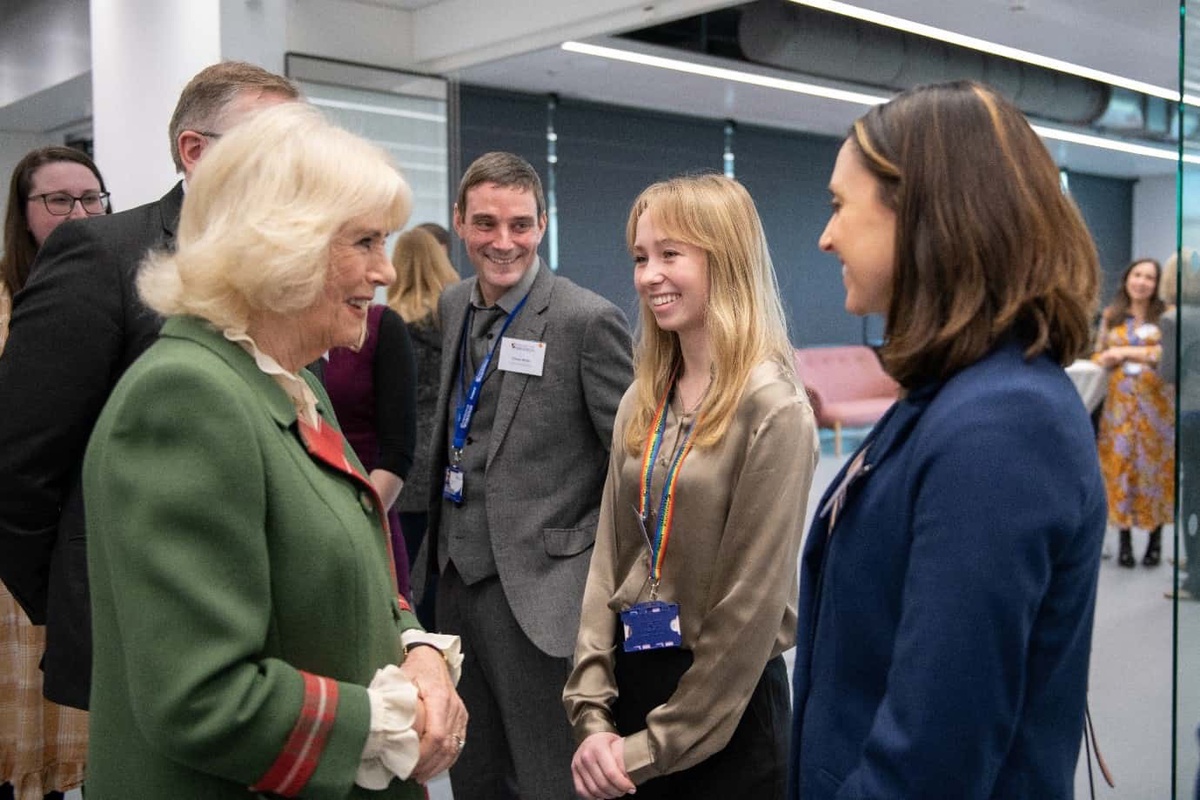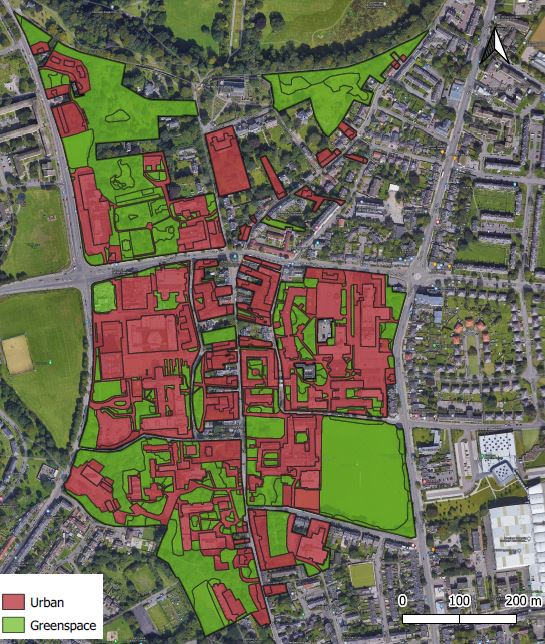Net Zero Commitment
As part of our Aberdeen 2040 strategy, Net Zero features as one of four high-level commitments linked to environmental sustainability, with a target to achieve net-zero before 2040. To support that high-level commitment, we have developed a comprehensive Net Zero Strategy (available here in December 2024) that articulates our baseline assumptions, details a series of emissions decarbonisation pathways, and establishes associated interim and long-term targets consistent with the Science Based Targets initiative (SBTi).
All of our emissions reporting (further details below) is consistent with the Greenhouse Gas (GHG) Protocols and the Scottish Government's Public Bodies Climate Change Duty (PBCCD). As part of this approach, we have also begun to populate a register of (already 100+) net-zero related projects and initiatives in areas such as building fabric, heating networks, renewable generation opportunities etc. These will be brought forward as funding permits.
In order to report our emissions data more publicly, the University has developed an interactive Sustainability Dashboard that provides current and historic data across all three emissions Scopes, in areas including energy, water, waste, business travel and many more.
The dashboard is openly available for staff, students, or the public to review. Several of the sheets can be interrogated e.g. to review campus or building specific data. In-year data is uploaded in batches as it becomes available.
The data comes from a variety of sources e.g. overall energy use data is based on metered consumption while some of the other data requires a degree of interpretation and the application of some assumptions e.g. business travel, commuting, and student relocation. In all cases the data represents our best efforts to report comprehensively based on the information we have available at the time.
The version below is an embedded copy of a Power BI dashboard. Please expand to full-screen for optimal viewing.
Any queries on the dashboard should be directed to the Sustainability team at sustainability@abdn.ac.uk.
Reporting
The University monitors and reports the carbon emissions resulting from its operations in a number of ways. This section includes information on our statutory climate change reporting for the Scottish Government and links to our previous Carbon Management Plan.
- Public Bodies Climate Change Duty Reporting
-
Every year, as part of the duty on Scottish public sector bodies to report their actions to tackle climate change we, alongside other universities, colleges, local authorities, NHS trusts and other public bodies, submit a statutory annual report to the Scottish Government.
- Public Bodies Climate Change Duty 2023-24 Report
- Public Sector Climate Change Duty 2022/2023 Report
- Public Sector Climate Change Duty 2021/2022 Report
- Public Sector Climate Change Duty 2020/2021 Report
- Public Sector Climate Change Duty 2019/2020 Report
- Public Sector Climate Change Duty 2018/2019 Report
- Public Sector Climate Change Duty 2017/2018 Report
- Public Sector Climate Change Duty 2016/2017 Report
Details of the PBCCD reporting exercise and all public body reports are available via the Sustainable Scotland Network (SSN) reporting page.
Our reports as part of this exercise are also available via SSN online.
- Carbon Management
-
Prior to the net-zero commitment made in Aberdeen 2040, our previous Carbon Management Plan (CMP) had outlined a series of commitments and projects to reduce our carbon footprint. Details of the 2016-2021 CMP can be found here. It identified an array of projects to improve energy efficiency across campus and progress against the plan was positive, with reductions exceeding the 20% target within the first two years.
As with much of the sector, the simultaneous expansion of campuses, coupled with demands for energy intensive equipment are a constant challenge. Despite these challenges, incremental improvements help to keep emissions in check, improve energy efficiency, and reduce grid consumption. These include:
- the campus wide installation of PC energy management software;
- the installation of solar panels at Hillhead, our main student residence;
- constant monitoring and targeting to identify energy inefficiencies in buildings;
- projects such as our energy-efficient shared data centre that serves the region's tertiary education sector;
- building upgrades like window replacement, insulation programmes, and proximity sensors on lights;
- the rolling replacement of less energy efficient bulbs with LEDs;
- the completion of our award-winning Passivhaus Nursery building;
- recalibration of our Combined Heat and Power engine resulting in significant energy savings.
Yet for every successful initiative, demands for new equipment or new or refurbished buildings mean the work to embed energy efficiency in all that we do continues.
- Emissions Offsetting
-
As part of the development of our Net Zero strategy, the need for a definitive institutional position on emissions offsetting has emerged as an area for further development. We intend to begin this discussion in AY 2024/25.
While there are established routes to decarbonising Scope 1 and 2 emissions, the indirect emissions we track under Scope 3 are harder to eliminate entirely. As such, we anticipate using various forms of offsetting, insetting, or other forms of sequestration to address these emissions.
Until we've developed an approved institutional approach to offsetting that addresses e.g. the type of emissions we wish to offset, the credibility of any schemes we use, and an agreed institutional process for tracking and managing offsets, it is important that colleagues note that we do not encourage colleagues to independently offset their emissions via publicly available schemes.
In the meantime, there are some narrow circumstances in which emissions will be offset. These are set out in the University's Expenses and Benefits Policy which highlights, for example, that certain grant funders (notably the Wellcome Trust) now require us to offset elements of research grants. This process is being overseen by colleagues in Estates & Facilities and Reseach & Innovation and individuals are not expected to undertake this offsetting independently.
Any offsetting that is approved will take place only through institutionally endorsed schemes that meet enhanced quality standards. Ad hoc schemes, such as those offered by airlines at the checkout stage of online booking, are not supported and should not be used. Costs incurred in purchasing such offsets will not be reimbursed as these offsets cannot be counted towards reducing our institutional emissions.
Staff wishing to discuss any aspect of offsetting should contact the Sustainability team in the first instance at sustainability@abdn.ac.uk
Net Zero Pledges
Our Aberdeen 2040 strategy commits the University to achieving net-zero emissions before 2040. Our approach will encompass emissions from all sources.
To reiterate this commitment we have signed the Global Climate Letter and the One Planet Pledge.
Internships
The Sustainability Team in Estates and Facilities have hosted summer and term-time internships for University students to help enhance our approach to net-zero and to sustainability more generally.
Details of available internships will be shared on the University's careers page.
Net Zero: Scope 3 Student Travel Emissions

Having identified that there was no agreed sector methodology, the Sustainability Team employed a part-time student intern through the University's 2022/23 InternPlus Scheme.
Her work resulted in a methodology and associated tool to calculate these emissions with a high level of granularity. This methodology filled a known gap in our Scope 3 emissions totals and added some 10,000 tCO2e to our emissions profile in 2021/22.
The methodology and associated materials were subsequently presented at a sector workshop facilitated by the EAUC and at the 2022 EAUC Conference, with the materials now widely available for all institutions to use and being developed as part of the EAUC's suite of emissions calculation tools. International Universities are also now investigating its use as a basis for their own methodologies.
Biodiversity: Greenspace Mapping

This 2023 summer internship saw a spatial QGIS map developed from scratch, showing land boundaries and identifying areas of greenspace or developed areas such as buildings. A mapping methodology called UKHab was then to define and map the different types of greenspace e.g., woodland, grassland, scrub, ponds, wetlands, marine and planted beds.
Of the sites surveyed (Old Aberdeen, Hillhead, Balgownie, Foresterhill, Newburgh, and Hall Forest in Kintore), it was identified that around two thirds of University-managed land is greenspace, totalling 59ha. This provides excellent scope for biodiversity improvement on campus, such as reviewing how we manage mown areas to encourage wildflowers, and in turn having a positive effect on declining insect species, such as our local pollinators.
